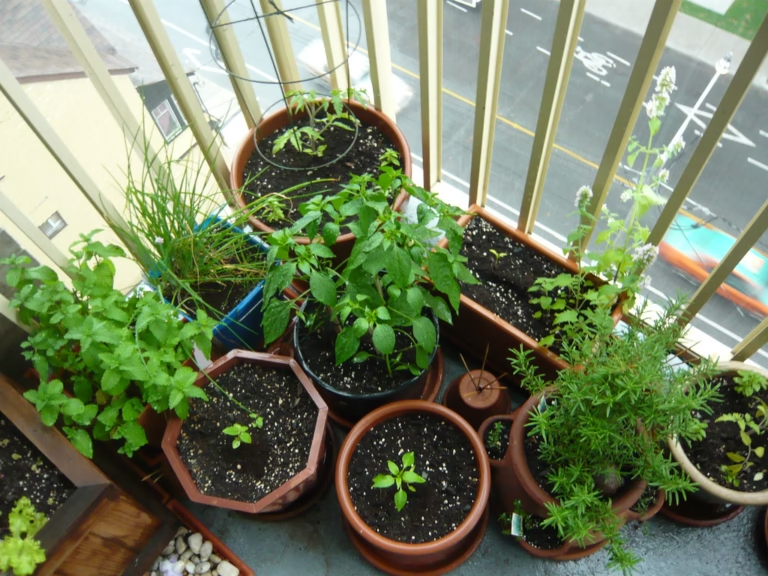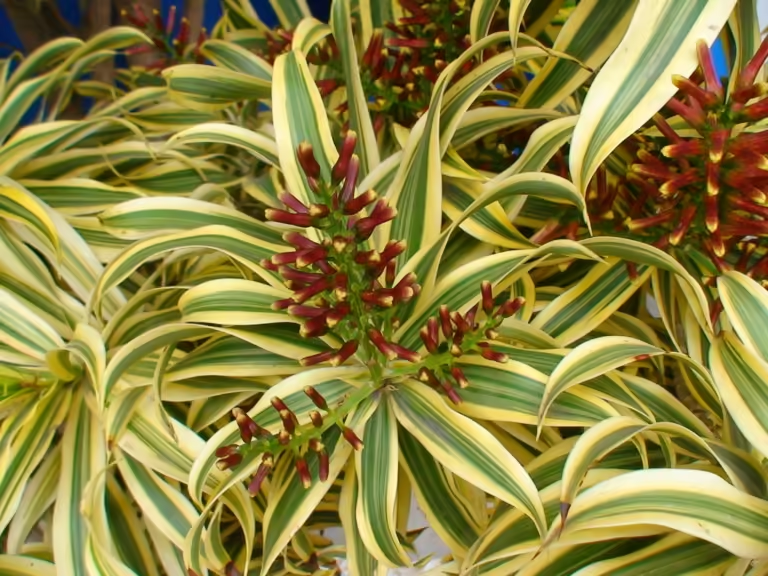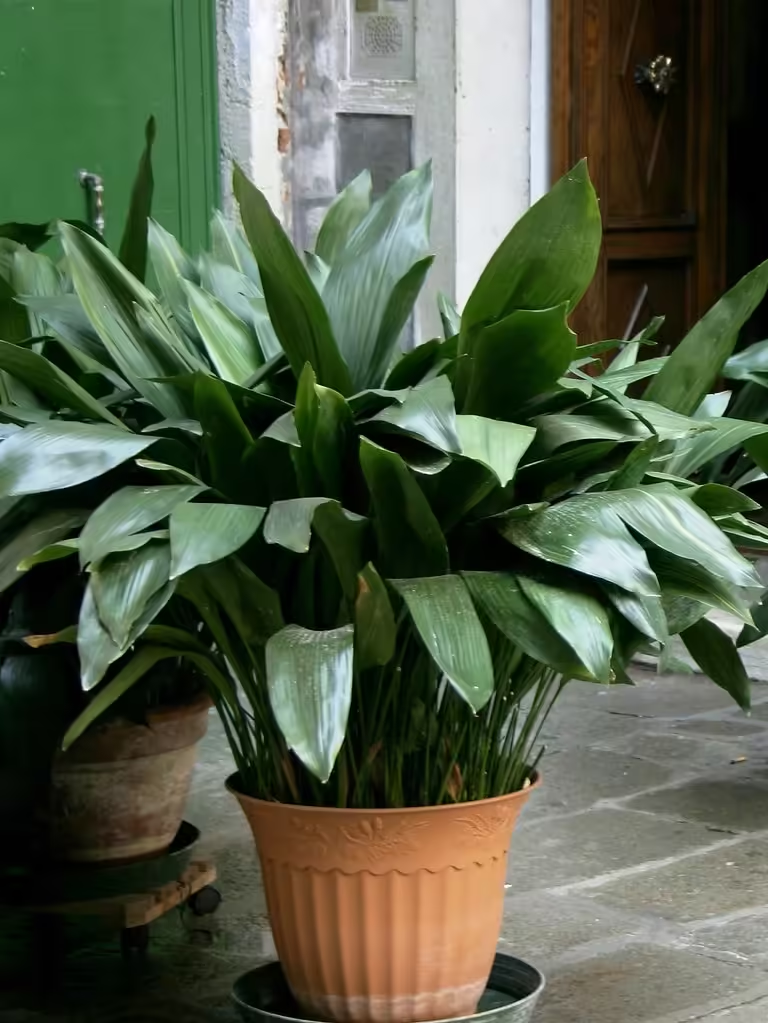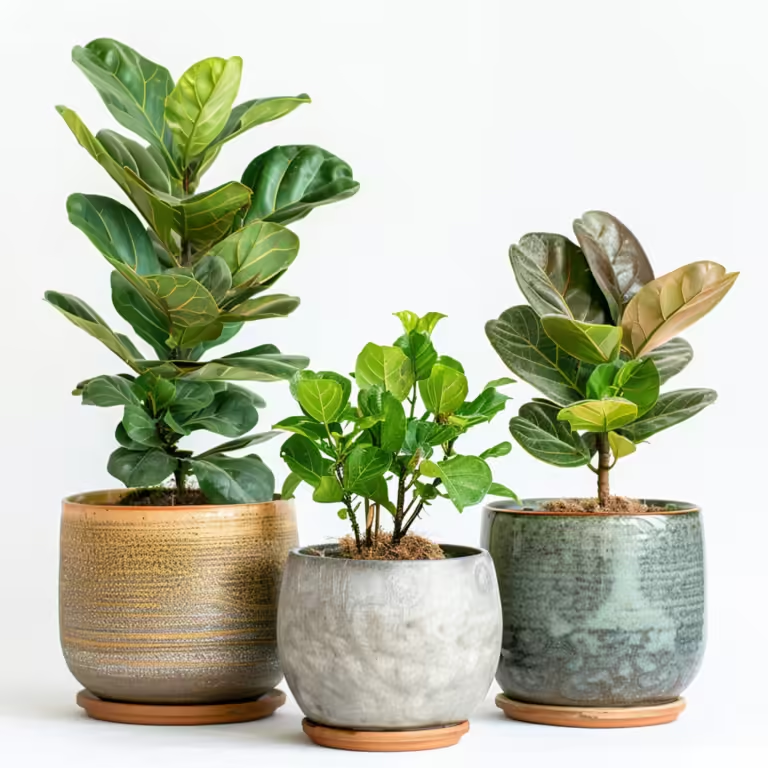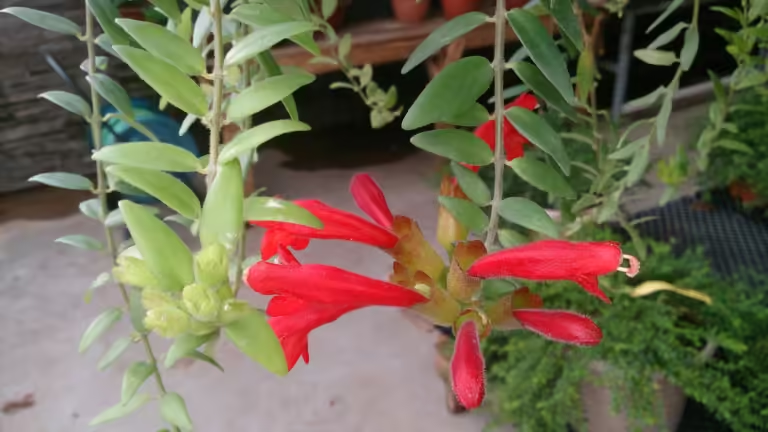5 Hard Truths About The Brazilian Lucky Wood Plant

5 Hard Real Truths About the Brazilian Lucky Wood Plant That Will Surprise You. I’ll cut through the fluff to reveal the real challenges and rewards of having this plant, backed by credible sources.
Today, I’m sharing honest, hands-on insight into growing the Brazilian Lucky Wood plant (officially known as Dracaena fragrans or ‘Massangeana’) indoors.
Here’s a quick peek at what we’ll be covering:
The Brazilian Lucky Wood plant – as an indoor plant – is easy to start. It is often sold as a stem cutting that roots in water.
However, maintaining its lush, variegated foliage indoors demands a precise balance between light, humidity and watering.
A lot of new Brazilian Lucy Wood owners see fresh sprouts within a few weeks, but later they struggle with yellowing leaves or leggy growth if conditions aren’t right.
That’s why we need to know what we’re doing wrong and what we can fix to grow a thriving Brazilian Wood plant at home. With the right mix of well-draining soil, bright indirect light, and consistent moisture without letting the roots sit in soggy soil, you can enjoy its iconic green-and-yellow striped leaves and let them shine!
Related reads:
- What are Grow Lights for Indoor Plants in 2025?
- 7 Best Grow Light Stands for Your Indoor Plants
- Guide to Indoor Plants For Beginners,
- Brazilian Wood Plant: Care, Benefits, & Where to Buy
- 15 Low Maintenance Full Sun Plants You’ll Love
- Fiddle Leaf Fig Care Guide
- Choose Your Indoor Plant Pots Wisely – 8 Different Types
- 10 Hard to Kill Indoor Plants for Busy People
- 20 Low Maintenance Plants for Indian Gardens
The 5 Hard Truths About the Brazilian Lucky Wood Plant

1. Luck Rooting and Slow Leaving: How Brazilian Lucky Wood Really Grows?
Most sellers ship bare stems, just a bare cut off a small block of wood/stem of this plant. If you order them online, they’ll come in a similar state.
The problem with this is that such cut-off stems may not always have been kept in proper conditions, so there is a chance the cutting you received may not be able to sprout roots when placed in water. There is always this risk of getting a wood piece that’s not propagable.
If, however, you’re able to get a good propagable piece of Brazilian Lucky Wood, then this bare root will easily root in water within 2-4 weeks, making initial growth feel like magic. However, once potted in soil, the plant’s progress often stalls for months as it gets used to its new condition.
So, don’t worry. It isn’t unusual for the cutting to sprout roots after a prolonged period and then slowly sprout leaves as the cutting shifts energy from rooting to leaf production.
According to JaykoReddit on Reddit: “I’ve had one for years and its grown well…didn’t get it from amazon but its the same plant, it should grow if in the correct conditions, scrape the wax off the bottom, place it in some soil (or water for a week till roots sprout and make sure it gets sunlight”.
2. Prone to Root Rot – The watering confusion: Don’t Let Roots Drown
I know what you must be thinking:
“So you’re saying the Brazilian wood can die from root rot if left in water… but don’t sellers and influencers show it sitting happily in water?”
You’re right to question that, and I am glad you are.
The truth is, those are “half-truths” often used to market plants like the Brazilian Lucky Wood (the Dracaena fragrans ‘Massangeana’).
So why do stem cuttings grow in water but still face root rot risks later?
When you see Brazilian wood stem cuttings thriving in water, it’s usually a short-term thing. It’s called the propagation phase of the Brazilian lucky wood.
Yes, Dracaena plants can grow roots in water, just like the Lucky Bamboo (Dracaena Sanderiana), but only for propagation purposes, not permanently. Ultimately, they have to be transplanted into soil.
The visual appeal of clear vases with rooted stems or stems with green foliage makes for a popular decor and marketing tactic but:
- Water roots are fragile and are different from soil roots. They’re suited to low-oxygen aquatic environments, not well-aerated potting mixes.
- If you transplant water-grown cuttings directly into soil without transitions, the roots will often suffocate or rot due to shock and poor drainage.
- Prolonged water propagation, especially with stagnant water, creates a breeding ground for bacteria and fungi, eventually leading to stem rot (especially if the stem is submerged in deep water).
Though dracaena tolerates brief drying, it suffers when kept bone-dry or too wet for too long.
Root rot is the most common indoor killer of Brazilian Lucky Wood because keeping them submerged in water for too long will make the roots fragile and oxygen deprived and that’s when root rot kicks in.
When watering, be sure to check the soil before watering: water only when the top inch of the soil is dry, and always use pots or planters with drainage holes and use a chunky, airy mix (add cocopeat and perlite to make an airy soil mixture).
Propagation of Brazilian Lucky Wood Plant
If you want to try propagating Brazilian Lucky Wood, then:
- cut a 4-6 inch healthy green section of the cane (avoid woody parts)
- place the cutting in a clear glass jar filled with filtered water.
- Keep only the bottom inch submerged – don’t deep dive it by putting the entire cane in water.
- Change the water every 3-4 days to prevent bacteria build-up
- Keep the jar in bright or indirect bright light.
Tip: You’ll start seeing roots in 2-3 weeks, and once you’re plant’s roots are 2 inches long, you can transfer the plant to soil or keep it in water with care, but not for long.
Right Pot Size for Brazilian Lucky Wood
i. If you’re starting from a stem cutting stage:
- Diameter: 6 inches
- Depth 6-8 inches
- At this stage, the roots are just developing. A smaller pot prevents water from lingering in the excess soil, which reduces the risk of root rot.
ii. If you’re starting from a nursery plant (1-2 feet tall):
- Pot size 8 to 10 inches diameter
- Pot depth 10 to 12 inches
- This gives enough room for the roots to expand without being too spacious, which could trap excess moisture.
iii. If you’re planting your propagated stem cutting:
- Pot size 6 to 9 diameter
- Pot depth 8 inches
- Taking a big pot can lead to overwatering. So, take a small-medium pot at this stage, which is ideal to establish root growth.

Pro Tip: If you’re just starting out with this plant, then skip fancy glass vases, trust me. Instead, treat yourself with a beautiful, earthy terracotta or self-watering pot with drainage holes. They help regulate moisture and prevent root rot. You can also use a ceramic pot, but make sure it has good drainage.
Note: If you want to purchase ceramic or terracotta pots, then it is best to buy them from your local nursery or plant store. Online, you’ll have to pay a delivery charge, or you’ll get the product at a slightly higher price.
Terracotta Pot Choice:
- Choose a porous unglazed terracotta pot with a drainage hole.
- These are ideal because the wick removes excess moisture, which is perfect for the Dracaena plant’s dislike of soggy roots.
It’s a good option for Indian climates or places where the humidity is high.
If you want to purchase terracotta pots online, then you can check:
- India: Amazon, Flipkart, Vaneyara, myBageecha, IKEA, WoodenStreet,
- International: (Check local sellers first, other than that, try) Amazon, IKEA, The Garden Gates, Campania International, Tuscan Imports. Besides Amazon and IKEA, the other 3 are more premium and high-end products.
Self-Watering Pot Choice:
Choose one that’s 8 to 10 inches in size with a water level indicator and removable inner pot with slits for air pruning.
Self-watering pots work well if you are someone who:
- Travels often or
- Forgets to water
- Have no watering schedule
- Live in a dry or air-conditioned environment
Avoid filling the reservoir too much, as Brazilian Lucky Wood (Dracaena plants) prefers slightly dry soil between waterings.
If you want to buy online:
- India: Amazon, Flipkart, Meesho, IKEA
- International: Unless it’s from a local store or seller, try Amazon and IKEA
Online Purchase Tips:
- Check size filters (small, medium, large) and confirm diameter/depth matches your plant needs.
- Read reviews carefully — look for notes on drainage, weight, and finish.
- In India, COD-enabled stores like myBageecha and Vaneyara are reliable for secure transactions.
- For premium quality abroad, go for Campania International or Tuscan Imports, well-known among design professionals.
Want to Grow Brazilian Lucky Wood in Water Long-Term?
You can give it a shot, but you’ll need the right container. Let’s see:
- Use a narrow-necked glass vase/ container to keep the cutting upright rather than a vast container.
- Add pebbles or LECA at the bottom for stability and minimal nutrient supply.
- Consider using a liquid hydroponic fertilizer (every 3-4 weeks), but read the directions for use properly.
Note: For the stem cutting and propagation, you can just use a glass bowl (catori) already available at your home.
3. The Missteps That Lead To “Leggy” Growth
This plant thrives in bright but indirect light – ideally near an east or north-facing window. In dim corners, leaves stretch blandly towards any light source, losing their vibrant central strip.
Tip: South-facing windows are your best friend. East-facing can work with a grow light assist.
Lack of adequate light also invites pests like spider mites to weak foliage. Supplemental full-spectrum LED grow lights for 4-6 hours daily can prevent this.
Related reads:
- Brazilian Wood Plant: Care, Benefits, & Where to Buy
- Fiddle Leaf Fig Care Guide
- What are Grow Lights for Indoor Plants in 2025?
- 15 Low Maintenance Full Sun Plants You’ll Love
- 7 Best Grow Light Stands for Your Indoor Plants
- Choose Your Indoor Plant Pots Wisely – 8 Different Types
- Guide to Indoor Plants For Beginners,
- 10 Hard to Kill Indoor Plants for Busy People,
- 20 Low Maintenance Plants for Indian Gardens
4. Humidity vs. Dry Air: Finding the Middle Ground
Dracaena fragrans comes from tropical forests, high humidity, with airy soil. When indoors, central heating, a hot/dry atmosphere, AC also can dry air to 20-30%, causing brown leaf tips and leaf drop.
Solutions include pebble trays, grouped planting to create a forest feel, or a mini humidifier to maintain 50-60% humidity.
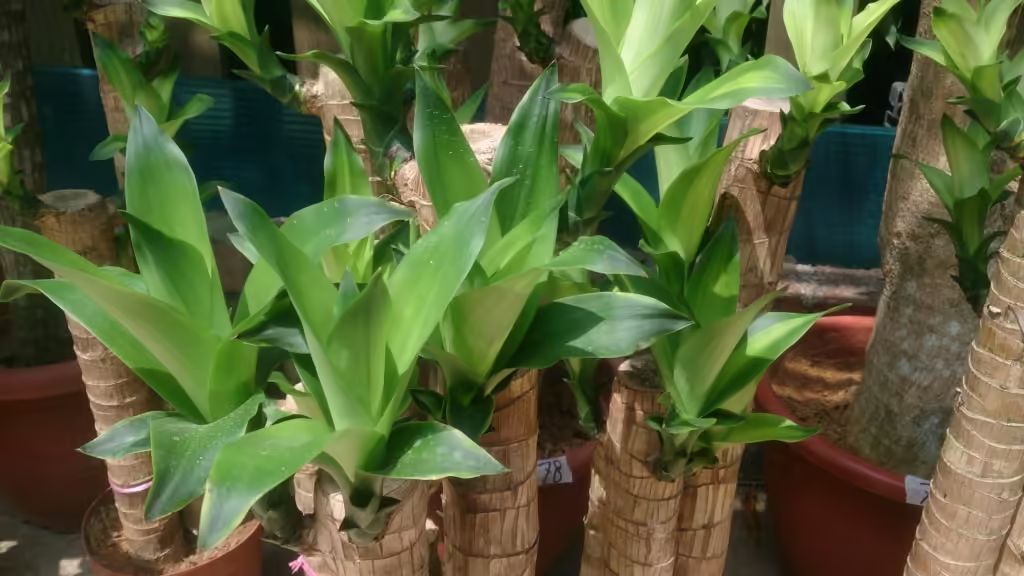
5. The Semi-Deciduous Surprise: Normal Leaf Drop
Unlike most evergreen Dracaenas, the Brazilian Lucky Wood has a bit of a dramatic flair in the cooler months. Don’t be alarmed if you see a few older leaves yellowing and dropping off autumn or winter.
It’s often just natural turnover as the plant redirects energy to newer growth.
But here’s where many plant parents panic.
They see those yellowing leaves and immediately reach for the watering can… or worse, the fertilizer (and I’m guilty of this one myself).
Unfortunately, that “fix” or “solution” can backfire fast. Overwatering during dormancy or fertilizing when the plant isn’t actively growing only stresses the roots and leads to issues like rot or salt buildup.
Owners who mistake this for a crisis increase watering or fertilizing. Accepting seasonal leaf fall and decline, and resisting knee-jerking fixes, is the key to having a thriving plant.

So, Sometimes in the Case of Fertilizer Less is More
Excessive feed brands marketed for “lucky bamboo” can actually harm dracaenas. These fertilizers tend to build up salts in the soil, which can burn the roots and cause leaf tip browning or discoloration.
I’ve made that mistake myself – not with Dracaenas, but with my peace lilies. I thought I was helping them thrive, but I ended up overfeeding them. 5 out of 6 died. It was honestly heart-shattering.
So, here’s what safer (and smarter): light application of a balanced, water-soluble fertilizer (e.g., 10-10-10 NPK) once a month in spring and summer only.
No need to fertilize in fall or winter when the plant slows down.
Less is more with Dracaenas. Trust me, your plant (and your heart) will thank you.
Potting and Pruning: Keeping it Tame
The Brazilian Lucy Wood plant can reach around 6-8 feet indoors over the years. Prompting repotting every 2-3 years. Root pruning during reporting prevents crowding and encourages fresh growth. Prune back “canes” above a node to maintain height and promote branching.
Real Owner Insights Online:
- “My cutting rooted in 3 weeks, sprouted two new shoots—but sat at 10 inches tall for six months!” on Reddit
- “Yellow leaves after I went on vacation—I’d left it too dry. Learned to use self-watering spikes.” on plantzone.in
- “Brown tips vanished once I switched to clay pots on a pebble tray.” on paudhewale.com
Majority Expert Consensus on Brazilian Lucky Wood plant
Horticultural authorities such as the University of Florida IFAS and the Missouri Botanical Garden confirm Dracaena fragrans as a tenacious yet picky houseplant: it cleans indoor air effectively but requires good, balanced care.
The Brazilian Lucky Wood Plant is not a carefree “lucky bamboo” substitute. Its initial root-and-spray appeal hides months of quiet adjustment to indoor life. But for those who master its water–light–humidity trifecta, it repays you with sculptural form, air-purifying prowess, and that signature central leaf stripe—a living emblem of patience and precision.
Reference:
- “Brazilian Lucky Wood Plants. Are these for real ? Has anyone tried these yet ? Apparently they don’t need roots.” on Reddit.com
- “How to Grow Brazilian Lucky Wood Plant” by Ugaoo.com
- “Brazilian Lucky Wood Plant – Dracaena Fragrans” by Paudhewale.com
- “Dracaena Warnecki / Brazilian Lucky Wood Rooted Plant Stem – Live Plant (Home & Garden)“ at hugaplant.com
- “Brazilian Lucky Wood Plant – Importance And Caring Tips” by Plantzone.com
- “Stem Sprouting Observations” on Reddit
- “Hydroponic vs. Soil Care Guide” by Ugaoo
- Amazon Product Reviews on Root Rot Incidence Amazon
Is Brazilian Wood Plant good for home?
Yes. It is good for your home. It’s an air purifying plant that is low maintenance, and some people believe it brings luck – it is a symbol of prosperity and harmony, hence why it is called the Brazilian Lucky Wood Plant. I, however, believe luck is in your hard work and prayers, so it’s better to get plants that are healthy for you and your family 🙂
Does Brazilian Wood need sun?
Yes, but partial, not direct. Brazilian wood requires bright, indirect light to grow well indoors, but if you’re placing it outdoors, then place it under partial shade.
How long does Brazilian Wood take to grow?
If you provide it the right care, then it’ll take about 40 days to sprout after planting. It’s a plant that belongs to the Dracaena family, so it’s low maintenance.


